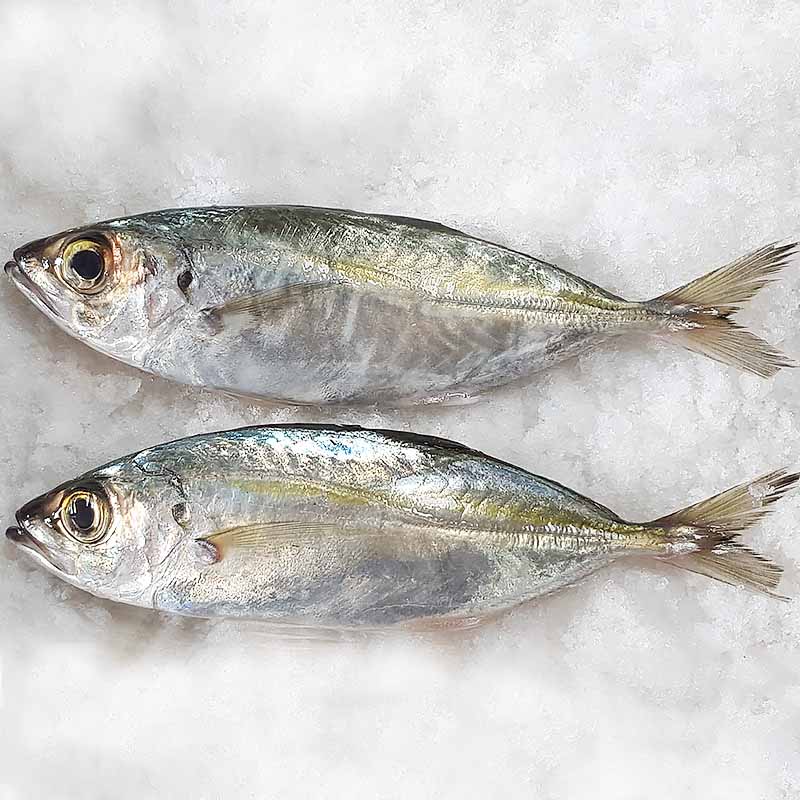

Fishery, biology and population characteristics of the Indian mackerel, Rastrelliger kanagurta (Cuvier) exploited along the Tuticorin coast. K., Kasim, H., Habeeb, O., And, M., & Jeyabalan, K. Mackerel is a fatty fish and a good source of marine lipids thus, increasing the consumption of this fish is good for human health ( Abdussamad et al., 2010 Abdussamad, E., Pillai, N. Additionally, Indian mackerel are characterized by dark muscles because of the high contents of myoglobin and lipids. The size of Indian mackerel varies in length, reaching 21.7 cm at 8.6 months old. Indian mackerel is characterized by a blue-green color on the back, silver flanks and a golden tint. Indian mackerel is the most available and economic fish sold in markets in different countries and is included in many local dishes. Journal of Food Science and Technology, 53(1), 104-117. Antioxidant and antimicrobial properties of grape and papaya seed extracts and their application on the preservation of Indian mackerel (Rastrelliger kanagurta) during ice storage. Mackerel arrives in India and forms the basis of pelagic fisheries after sardines, representing 7.2% of total marine fish ( Sofi et al., 2016 Sofi, F. Mackerel fish are also found in the waters of the Red Sea and the Arabian Gulf and are abundant in summer. Indian mackerel ( Rastrelliger kanagurta) belongs to the family Scombridae and is commonly found in the coastal areas of the Indian Ocean. Revue Scientifique et Technique, 25(2), 607-625. Peligros para la inocuidad de los alimentos que surgen durante la fase de producción: problemas de la piscicultura y la industria piscícola. There is strong evidence that fish are rich sources of vitamins such as B12 and B6 and minerals, especially iodine and fluorine, which are required for the prevention of goiter and promote strong teeth and bones ( Håstein et al., 2006 Håstein, T., Hjeltnes, B., Lillehaug, A., Skare, J., Berntssen, M., & Lundebye, A. Some of the most available protein sources for human beings of fish and fish products, which represent approximately 80% of animal protein. Indian mackerel chemical composition lipids fatty acids Polyunsaturated fatty acids are the main constituents of lipids, which exert positive effects on the body by providing the main nutrients and preventing disease in the consumer. We conclude Indian mackerel is a rich source of protein and lipids. Among unsaturated fatty acids, the content of polyunsaturated fatty acids was higher than that of monounsaturated fatty acids, and those with the highest levels in Indian mackerel were palmitoleic, palmitic, myristic, oleic, 15-tetracosenoic, linolenic, and stearic acids in addition to docosanoic, eicosanoic, 5,8,11,14,17-eicosapentanoic, and 11-eicosenoic pentadecanoic acids. The Indian mackerel contained high and comparable levels of saturated fatty acids and unsaturated fatty acids, and the different samples exhibited somewhat similar fatty acid contents. In this study, revealed that moisture, protein, and fat are the main constituents of Indian mackerel. The samples were analyzed to estimate the proximate chemical composition, Lipid Fractions, and Fatty acid analyses from Indian mackerel. kanagurta) were purchased from the central fish market in Jizan, which is caught from the port of Jizan, Saudi Arabia. This study aims to investigate the chemical composition, saturated and unsaturated fatty acid contents, and fatty acid fractions in Indian mackerel muscle.

Indian mackerel are characterized by dark muscles because of the high contents of myoglobin and lipids.

Fish and fish products of the most available protein sources for human beings.


 0 kommentar(er)
0 kommentar(er)
